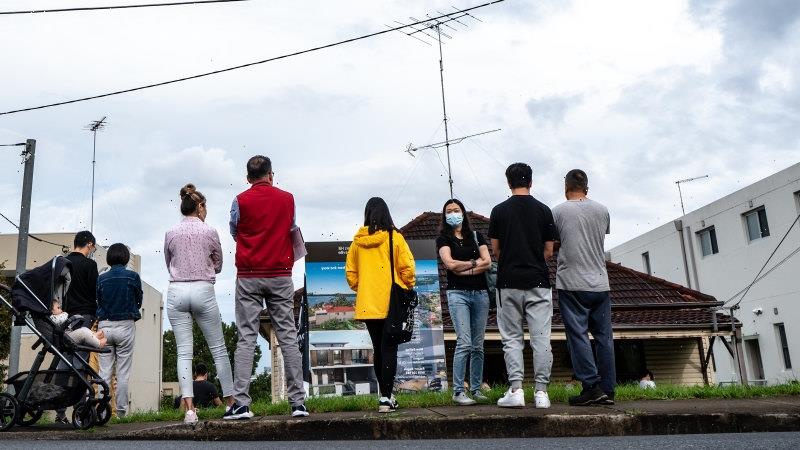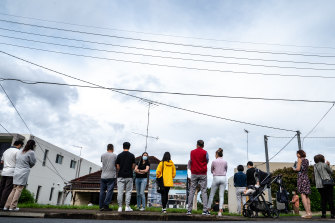Home buyers are being warned to prepare for “repayment shock” as rising inflation pressures force the Reserve Bank to consider delivering the largest one-off interest rate rise in two decades amid signs the economy is being buoyed by increasingly profitable businesses.
The head of the Australian Prudential Regulation Authority, Wayne Byres, said on Tuesday the unexpected emergence of inflation pressures and higher interest rates would have a “significant impact” on borrowers, especially with house prices expected to fall.
The banking regulator is keeping an eye on mortgage holders as inflation and interest rates rise.Credit:Flavio Brancaleone
Mortgage sizes swelled to record levels through the Covid pandemic as interest rates were slashed and consumers – unable to leave the country – sank money into the property market. The average new mortgage in NSW has reached $800,000 while in Victoria it is at $650,000.
The Reserve Bank started lifting interest rates in May, taking them to 0.35 per cent in what was the first increase in rates since 2010. Financial markets and the bank expect rates to continue increasing in a bid to bring inflation, currently at 5.1 per cent, under control.
The bank is expected to lift rates by at least 0.25 percentage points at its meeting next Tuesday with financial markets and some economists tipping a 0.4 percentage point jump. Such an increase would be the largest one-month lift since it pushed up rates by half a percentage point in early 2000.
Byres, speaking in Sydney, said the Australian economy was “entering a very different environment”, and the regulator was closely watching mortgage-holders on fixed rates that will be due to expire soon and people who took on mortgages many times the size of their annual income.
“The faster-than-expected emergence of higher inflation and interest rates will have a significant impact on many mortgage borrowers, with pockets of stress likely, particularly if interest rates rise quickly and, as expected, housing prices fall,” he said in a speech to the Australian Financial Review Banking Summit.
“Of particular note will be residential mortgage borrowers who took advantage of very low fixed rates over the past couple of years, and may face a sizeable ‘repayment shock’ (possibly compounded by negative equity) when they need to refinance in the next year or two.”
Data out on Wednesday will confirm the slowdown in the national property market.
CoreLogic’s daily index measure of dwelling values suggests a drop of 1 per cent in Sydney property values through May and a 0.7 per cent drop across Melbourne.
While the property market is slowing, data on Tuesday showed the economy continued to grow relatively strongly through the first three months of the year despite deadly flooding across northern NSW and Queensland.
The Australian Bureau of Statistics said company profits lifted by 10.2 per cent in the March quarter to be 25.3 per cent up over the past 12 months. Almost all the growth was driven by the mining sector where profits increased by 25 per cent.
The strength of the jobs market was also evident with wages and salaries up by 1.8 per cent to be 5.2 per cent higher over the year. This measure includes both the number of people in work and their pay.
Separate data, however, showed the export sector will deliver a 1.7 percentage point hit to growth in the quarter as imports lifted and the amount of exports – particularly out of the rural sector – fell.
Senior ANZ economist Felicity Emmett said the figures suggested labour costs were picking up, putting pressure on the Reserve Bank to consider a large rate rise next week.
“The RBA’s preferred measure of wider labour costs – non-farm average earnings per hour – rose by a strong 2.6 per cent in the quarter and more than 5 per cent year-on-year, keeping speculation of a 0.4 percentage point move at the June meeting very much alive,” she said.
Most Viewed in Politics
From our partners
Source: Read Full Article

